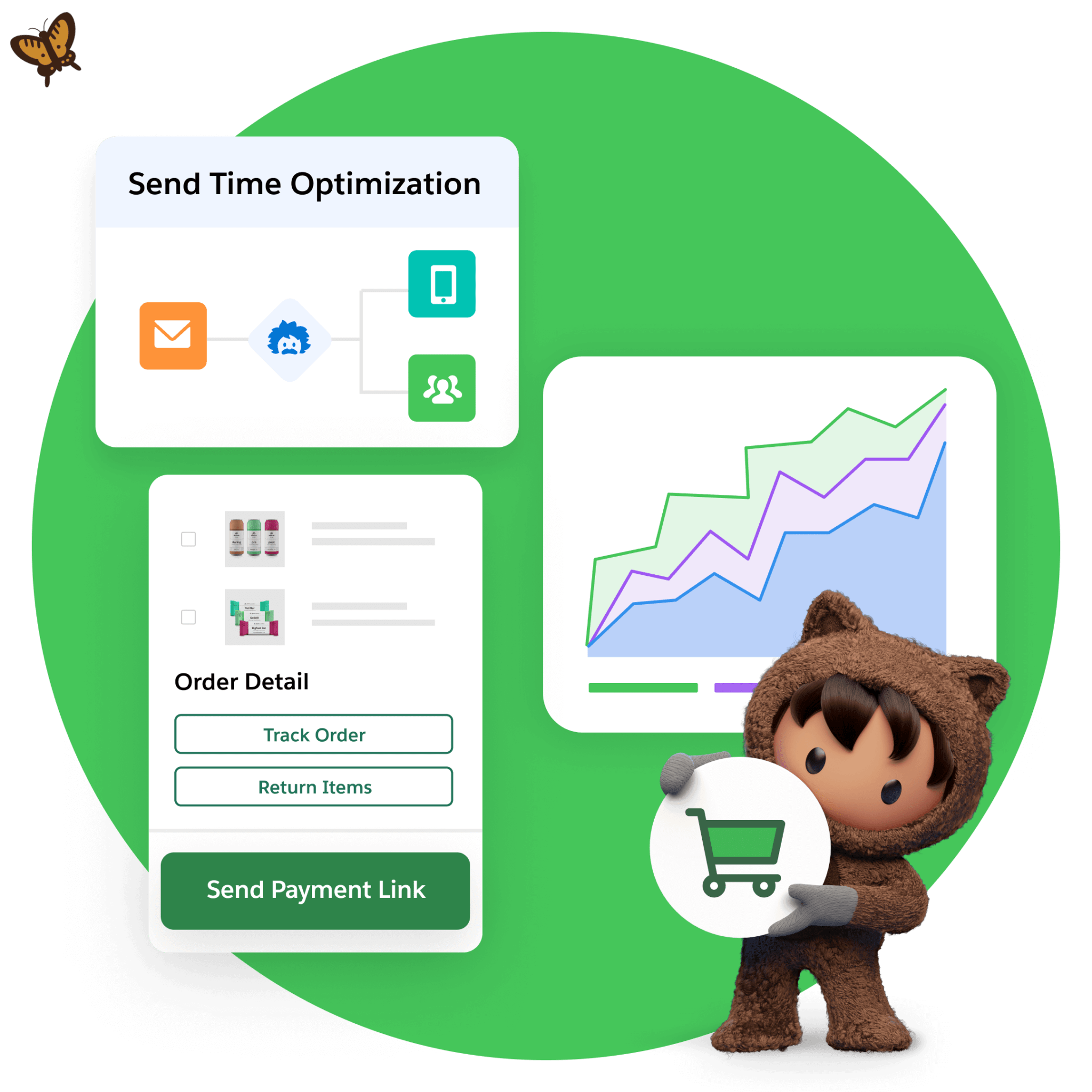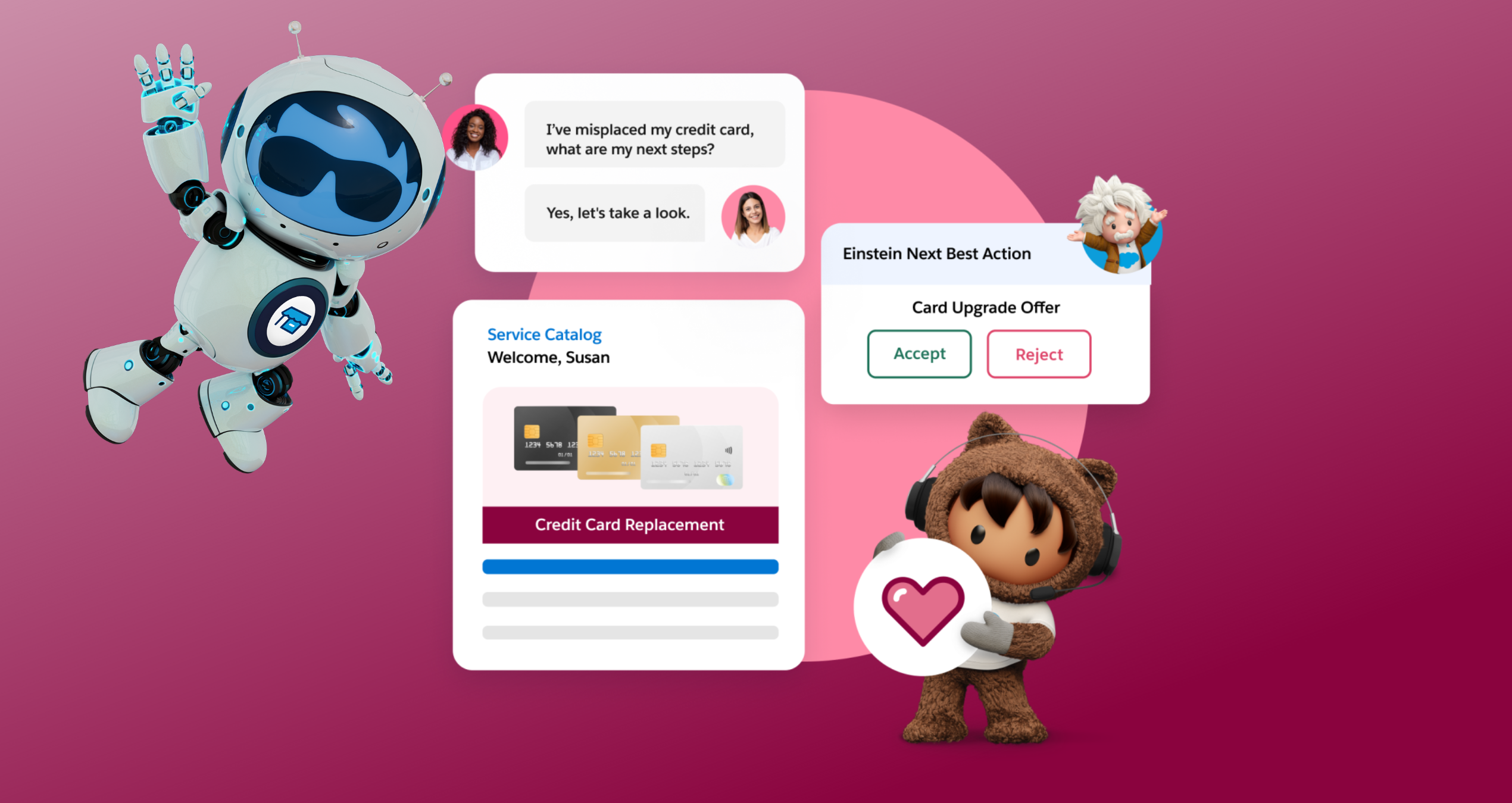We all have that one coffee shop we return to again and again for our daily motivation, tough days, and everyday moments. In fact, a few small and medium-sized businesses (SMBs) in your neighborhood create so much value and customer connection that their retention is better than big businesses. People become reliable, repeat customers without even thinking about it. This is a great example of customer retention at play.
Businesses across the world are learning the power of customer retention and how it’s changing with new markets and smart technology on the rise. Let’s learn how to implement an effective customer retention strategy for your startup or SMB.
What you’ll learn:
- What is a customer retention strategy for small businesses?
- Benefits of a solid customer retention strategy for SMBs
- How to build a customer retention strategy for your small business
- Make your customer retention strategies more effective with Salesforce
What is a customer retention strategy for small businesses?
A customer retention strategy is a plan you can take to keep your existing customers engaged and loyal over the long term. It’s about building strong relationships and encouraging repeat business rather than solely focusing on acquiring new customers. Retention aims to increase the customer’s lifetime value (CLV). This means the total revenue a business can expect from a single customer over the course of their relationship.
Some other terms you may have heard for this include:
- Customer loyalty program: Initiatives designed to encourage repeat business and loyalty.
- Client relationship management: Strategies focused on maintaining and improving customer relationships.
- Retention marketing: Marketing efforts aimed at keeping existing customers engaged.
- Customer lifecycle management: Managing customer interactions across their entire relationship with a company.
- Churn reduction strategy: Efforts to minimize the number of customers who stop doing business with a company.
- Customer engagement strategy: Plans to maintain and enhance customer interactions and experiences.
Small business service at your fingertips
Benefits of a solid customer retention strategy for SMBs
About 61% of SMBs state that repeat buyers drive more than half of their revenue. Your existing customers play a significant role in your success for various reasons. They already trust your business, making them more receptive to additional purchases and likely to spend more over time. They become valuable brand advocates who bring in new business through referrals and word-of-mouth marketing.
Retained customers also provide a stable, predictable revenue stream that strengthens your business planning. This creates a competitive advantage by establishing loyalty barriers competitors must overcome.
And, these long-term customers offer more insightful feedback for improving your products and services because they believe in your business. Salesforce’s State of AI Connected Customer report states that a whopping 73% of customers now feel treated as unique individuals by brands. This is a notable increase from 39% in 2023.
Source: State of the AI Connected Customer Report
What does an effective customer retention strategy involve?
Your customer retention strategy should go beyond offering a solid product. Here are the key pillars to consider:
Understanding your customers: This involves knowing your customers deeply — their needs, preferences, pain points, purchase history, and overall journey with your business.
Providing prompt service: Your customers deserve strong customer service that quickly resolves issues and exceeds expectations.
Building relationships: Create a connection with your customers through personalized communication — showing them you value their business.
Gathering feedback: Use survey forms to regularly collect feedback and improve your products and experiences.
Ready to provide better customer service for your small business?


How to build a customer retention strategy for small teams
Now that you understand the importance of customer retention, here are practical tips to get you started:
1. Create a seamless onboarding experience
Onboarding (the process of guiding new customers through the stages of setting up your product or service) is first, and the goal is to ensure each customer has a successful start. Create an onboarding experience that showcases immediate value and sets customers up for success from day one.
Onboarding can look like having professional training, or watching a video tutorial. It can also just mean a quick email with set-up instructions. Use this opportunity to build a relationship with your customers with personalization.
For instance, if your business sells electronic devices, include quick-start guides, step-by-step set-up instructions through visual aids, and troubleshooting tips. You can also curate a fun unboxing experience that many seem to love on social media.
2. Hyper-personalize customer interactions
Personalization is at the center of your customer retention strategy. You can tailor your communication with customers based on individual behaviors, preferences, and purchase history. The goal? To make each interaction feel relevant and specifically catered to a customer, rather than treating them as part of a general audience.
AI can significantly help you with personalization. It can analyze large volumes of customer data, and predict each customer’s preferences.
For instance, if you’re an ecommerce business, you can use customer data to tailor your online store, marketing content, and in-app experiences. If some customers prefer personalized product recommendations, you can set up a personal shopping assistant to identify your customers’ choices. This can help to increase the average order value (AOV).
Start selling online with Starter Suite
Set up your digital storefront, engage customers, and sell more using a commerce-ready platform with integrated tools for every sale.

3. Provide 24/7 customer service
Satisfied customers are your happy, repeat customers, and will enhance your net promoter score (NPS). In fact, according to Salesforce’s State of Service report, 88% of customers state good customer service makes them purchase from a business again. That’s a big number, and directly impacts your business. Provide prompt, helpful, and personalized support across multiple channels to help your customers, wherever they contact you..
Help your team resolve issues efficiently and go the extra mile to exceed expectations. For example, does your product require real-time support during its setup? What are users saying about your product online, and how can you implement that feedback in improving your service? Answering questions like this can help you enhance your customer experience. Here’s what customers are saying about customer service:
(Source: The Sixth Edition State of Service Report.)
Think of AI as your trusted partner in offering great customer service 24/7. You can use automated tools to detect potential red flags and fix them before they flare up. AI can also help you offer various types of support to your customers — whether live chat, self-service, or omni-channel support. If you’re a sole proprietor, founder or have a lean team, you can implement Agentforce to deliver round-the-clock, contextual support.
4. Create a customer loyalty program
Develop a loyalty program that meaningfully rewards continued business. This also creates clear incentives for customers to stay engaged. Your loyalty program can include discounts, points, or other incentives, including sneak peeks into exclusive launches. You can also consider offering a tiered loyalty program to encourage increased spending and engagement. A common example is the bakery model of rewarding customers with a free dessert after nine purchases. Surely, you’d’ve seen this in your neighborhood or town.
Here’s how AI can help craft your loyalty programs:
Segment your customers based on complex behavioral patterns rather than simple demographics with the help of AI. This can help you craft loyalty programs that will likely attract your customers.
AI can also create personalized pricing strategies and offers to make your customers feel special. Plus, it can monitor competitors’ pricing and adjust yours in real-time. Machine learning algorithms can identify patterns that show when customers are likely to leave. This can help service teams proactively intervene and engage with your customers to identify their pain points and offer personalized solutions.
5. Actively gather and use feedback
Show customers that you value their opinions and are willing to make changes based on their input. This is where a customer relationship management (CRM) tool comes in handy. A CRM centralizes all your customer information, including omni-channel interactions and customer feedback, helping you make data-driven decisions.
An AI CRM can analyze large amounts of customer data and provide actionable insights for your strategy. It can also gather feedback through sentiment analysis, social media monitoring, and offline interactions.
For instance, if you’re hosting an event or attending a large-scale event like Small Business Week or Dreamforce, you’re bound to interact with your existing and potential customers. Use AI to gather and handle the time-consuming analysis of customer feedback. This enables you to dedicate your focus to strategic initiatives.
Just get started.
No matter where you are on your journey as a small business owner, you can get started with Starter Suite — the all-in-one AI CRM your SMB needs.

6. Make them feel a part of something big with a community
You already know this — a strong community fosters loyalty and advocacy. Communities provide a space for customers to interact with each other and your business. Create opportunities for customers to connect with each other.
Your community interactions can provide you with invaluable data. This can help you personalize your marketing strategy and products. Community forums and groups can serve as platforms for customers to help each other, reducing the burden on formal support channels. Salesforce’s Trailblazer Community is one such example. Entrepreneurs like you can join the community, explore its various forums, and interact with other founders and subject-matter experts.
Join millions in the growing Salesforce ecosystem
Trailblazers are free to reinvent themselves, free to dream bigger.

7. Create a win-back strategy
You should focus on re-engaging customers who have become inactive or stopped purchasing. With the help of a win-back strategy, you can rebuild your relationship with those customers. Start by analyzing why customers left by examining purchase history, feedback, and interactions.
With AI’s help, you can segment former customers based on their behavior, preferences, and, reasons for leaving. Identify the patterns between their purchases, interactions, and actual concerns. Based on those insights, you can create more effective win-back strategies. Also, AI can predict the likelihood of a customer’s return and create personalized re-engagement messages that directly address their concerns.
Salesforce Starter Suite can help you understand your customers deeply. As it brings together data across sales, marketing, service, and commerce — you’ll get precise insights on what works and what doesn’t for your customer.
Kickstart your SMB with Starter Suite
Get started with CRM and see results from day one with Starter Suite — the all-in-one suite with the marketing, sales, service, and commerce tools you need to succeed.

Make your customer retention strategies more effective with Salesforce
Effective customer retention isn’t a short-term plan, it’s a long-term investment in your future. With the right tools and technology, you can invest in your customers easily. And, with a CRM, your customer retention strategy works from day one. We’ve kept it small-business-friendly so it comes with built-in guidance for a seamless experience. Start your journey with a Starter Suite today.
Looking for more customization? Explore Pro Suite. Already a Salesforce customer? Activate Foundations to try Agentforce today.
AI supported the writers and editors who created this article.
Frequently Asked Questions (FAQs)
Customer retention strategies are methods and practices used by businesses to keep existing customers engaged and loyal. These strategies aim to reduce customer churn and increase customer lifetime value (CLV).
Customer retention is crucial because it’s generally more cost-effective to retain existing customers than to acquire new ones. Loyal customers also tend to spend more, refer new customers, and provide valuable feedback.
Customer feedback is vital for retention as it helps you understand customer needs and preferences. Actively listen to and act on feedback to improve your products, services, and overall customer experience.
You can measure customer retention using metrics like customer retention rate (CRR), the percentage of customers who continue to do business with you over a specific period, and customer churn rate (CCR), the percentage of customers who stop doing business with you. Net promoter score (NPS) measures customer satisfaction and loyalty based on how likely they are to recommend your business to others.
Personalization is crucial because it makes customers feel valued and understood. Tailoring your communications, offers, and experiences to individual preferences, helps build stronger, more meaningful relationships with your customers.







